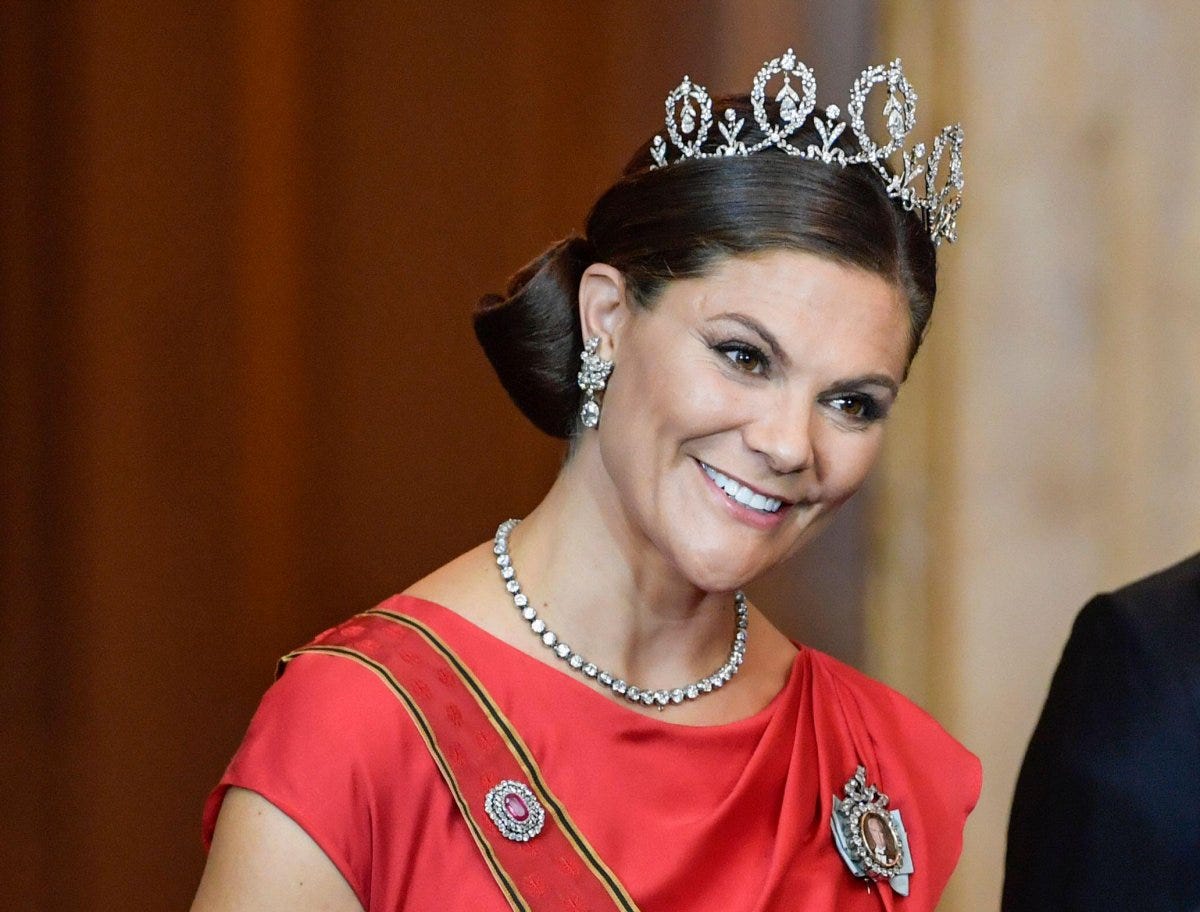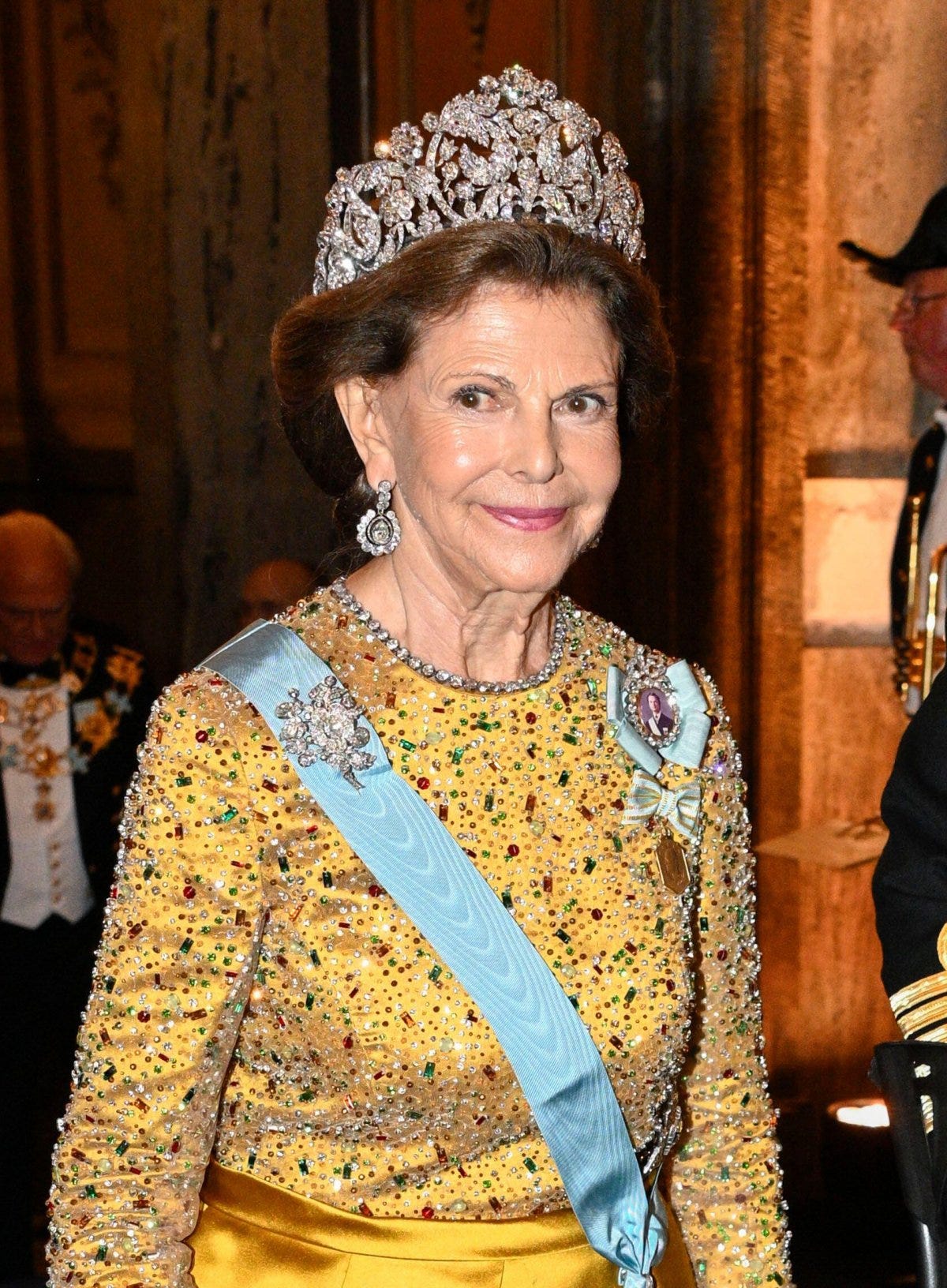The Tiaras That Crown Princess Victoria Can't Yet Wear (And One She May Try Soon!)
As the second-ranking lady at the Swedish royal court, Crown Princess Victoria has access to a dizzying array of tiaras—but not the ones reserved for the Queen of Sweden
Most European royal families have an extensive tiara collection with an interesting set of rules about access and wear. The British collection is controlled by King Charles III and Queen Camilla, who offer select pieces to their relatives as loans for gala moments. In Denmark, Queen Mary is now the supervisor of a cache of tiaras that includes several pieces of crown jewelry, and soon she will begin to decide how to share those jewels with her daughters. And in Sweden, the vast Bernadotte collection is largely shared among all of the ladies of the family—with a few exceptions.

This week, the Crown Princess of Sweden marked her 48th birthday with family celebrations at the Swedish royal family’s summer residence, Solliden Palace, on the island of Öland. Crown Princess Victoria, who will one day succeed her father as the reigning Queen of Sweden, has been one of the world’s best and most exciting tiara-wearers for thirty years.
Since her tiara debut in 1995, Victoria has worn a stunning array of tiaras from the royal vaults. She has dazzled in a remarkable eleven tiaras, more than the entire collections of some European royal families. (You can see the full roster today at The Court Jeweller.)
But there are a few tiaras in the Bernadotte collection that she has yet to wear. In today’s discussion post, we’re looking at four of them in particular. Three of these are particularly grand jewels, likely reserved for the moment when she becomes Queen, and the fourth is a tiara that we may see her wear at any of her next gala appearances.

Among the largest and most important jewels in the Swedish royal collection is the Braganza Tiara, an enormous diamond floral diadem with roots in imperial Brazil. The tiara was made in France in the 1820s using a cache of diamonds that originally belonged to Archduchess Maria Leopoldina of Austria, the first wife of Emperor Pedro I of Brazil. After her death, the stones were inherited by their five surviving children, who then sold the gems back to their father. He handed over the diamonds to a French jeweler to have a tiara and necklace made for his second wife, Princess Amélie of Leuchtenberg.
Keep reading with a 7-day free trial
Subscribe to Hidden Gems to keep reading this post and get 7 days of free access to the full post archives.




